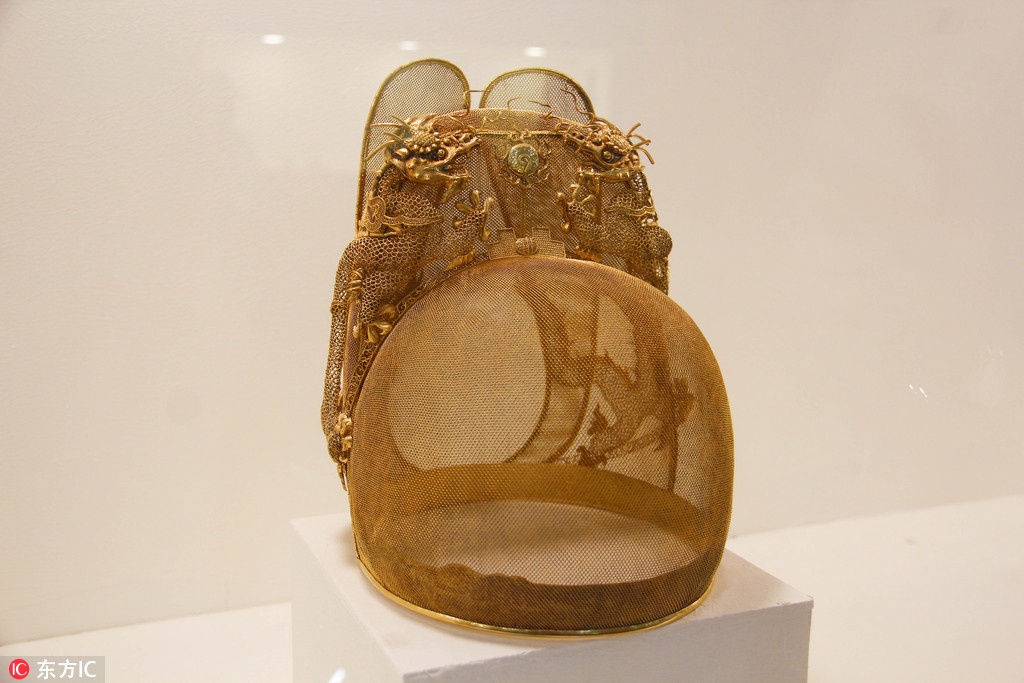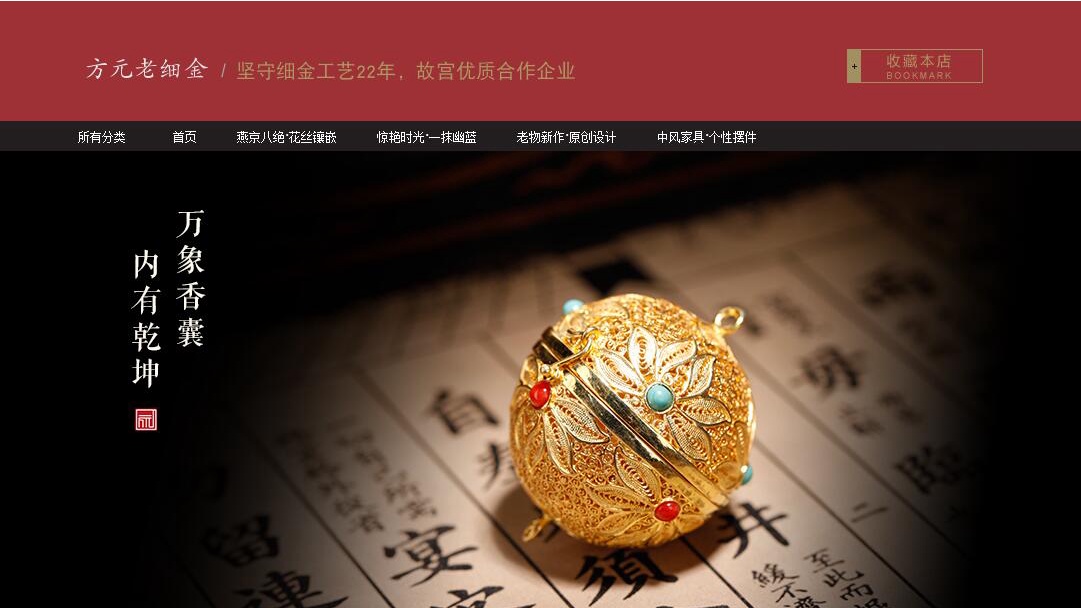
Filigree inlaying, also called fine metal workman's technique, is a traditional form of craftsmanship with a long history, which is mainly used to make imperial accessories. It’s the combination of filigree and inlaying. Filigree is made of gold, silver, and copper through nipping, filling, assembling, welding, weaving, piling, and other traditional techniques. Inlaying is made through rasping, engraving, pounding, striking, squeezing, embedding, and other techniques. Sheetmetal is first shaped into base or claw-shaped groove, which will be inlaid with pearl and gem.
Filigree inlaying, as a form of craftsmanship, excels in weaving and piling, which will materialize a magnificent work when Kingfisher feather inlaying is also used. The kingfisher is a beautiful bird with feathers on its back displaying very attractive and lively blue color, which are often mounted in different jewelry pieces by skilled craftsmen. Now filigree inlaying can only be found in Beijing and Chengdu, with the former being home to the most well-developed filigree inlaying. Filigree inlaying in Beijing symbolizes imperial filigree inlaying of China.
Where to buy:
Fine Traditional Filigree Jewelers

Firstly opened in 1996, the store mainly sells Chinese traditional jewelry. It is a specialist in making jewelry to order, using all types of precious stones, set in gold or silver. Repair and duplicates also available. The handmade jewelry is much exquisite and unique.
Opening Hours: 8:30 - 21:30
Location: Bldg 3, China View Gongti Donglu Chaoyang District工体东路丙2号中国红街3号楼2层
Online mall: http://www.dafangyuan.net/
Where to see:
The Palace Museum
The complex, centering on the three major halls, consists of 70-plus halls of all sizes, and more than 9,000 rooms, and is the largest collection of preserved ancient wooden structures in the world. The buildings are strictly designed based on the feudal ritual system. The outer palace consists of three halls, where emperors deal with the governmental affairs; the imperial palace includes the inner palace complex, where concubines and emperors live.
As the part of permanent exhibitions of the Palace Museum, the Treasure Gallery spaces in the northeast part of the Forbidden City in an area of the Museum known as the Palace of Tranquil Longevity Sector (Ningshou gong qu). It consists of six gallery rooms displaying pieces from the imperial collection and extant accouterments for palace life. All of these exquisite items are made of precious materials, such as jade, jadeite, gold, silver, pearls, and other precious and semi-precious stones. The superb craftsmanship and inestimable value of each piece is aptly summarized in the title of the gallery. You can appreciate top filigree inlaying skills on this exhibition.
An additional ticket (10 yuan/person) is required for admission to this area, which houses both the opera gallery and Treasure Gallery.
Location: No.4 Jingshanqian Street, Dongcheng District, Beijing 北京市东城区景山前街4号




